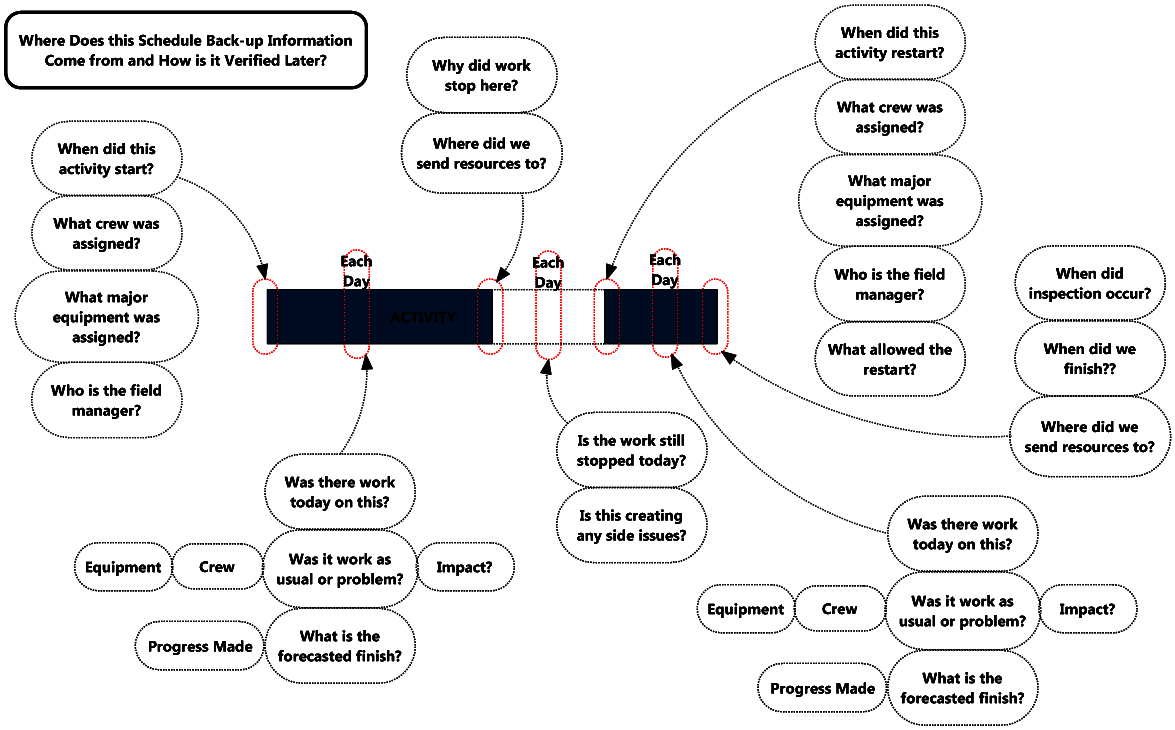Industry Rules, Standards and Guidelines Will Not Transform A Poorly-Designed Schedule Into A Great Project Schedule
There is only one element that will allow the creation of a great baseline project schedule.
Okay, what is this one element?
Get ready for a big surprise …. It’s a great scheduler who has the inherent knowledge and acumen needed for creating a great project schedule. There is also one element that all the participants must bring to make a great schedule work greatly on the project.
Every scheduler, as smart, as serious and as dedicated as they may be, is not a great project scheduler. In fact, most likely very few schedulers belong in the business. This statement will make some schedulers very happy and other schedulers ready to take up arms to defend their livelihood.
If the underlying schedule network flow logic is not good or the best it can be, we have a systemic problem that all the existing industry rules and guidelines can’t and won’t solve. Yes, taking the industry guidelines into account may in some way correct the poor logic network, but they are not the end-all and problems may yet exist in your schedule.
WHAT ARE THE TYPICAL REMAINING PROBLEMS WITH MANY IF NOT MOST SCHEDULES
Contained Scope
The WBS is your guide for completeness of scope and the WBS itself must be well designed and complete. This is not often the case. I constantly hear it said that it is simply too much trouble and too time-consuming to include every small scope item or every submittal-procurement process. We would call that a lazy scheduler. As Murphy tells us it is always the item, we do not include that causes the problem; in this case or schedule to not support us fully.
Submitting, reviewing and the purchase process is a work activity, maybe not a fieldwork activity, but an activity none the less.
It’s simple, never leave out a scope item, never, never, never. Don’t be a lazy scheduler.
Schedule Network Logic
There is a great lack of the understanding of relationships or activity links. At the basic level we must understand that a relationship in a way is also an activity, such as a planned crew relocation, a transfer of a work space to a different subcontractor’s crew, the relocation of major construction equipment, the next physical event that can or must now take place or a scaffold move/re-setup.
There is hard (physical or mandatory), soft (preferential, desired, a planner’s choice), resource flow (plan of major and limited equipment or limited specialty tradesman) and these all require the correct planning.
User-applied Constraints
Constraints of any type should be used at an absolute minimum and with extensive thought. Hard (two way) constraints should hardly ever be used unless your crystal ball is exceptionally accurate. Yes, there are times that they are beneficial if there is some event that must happen on a particular date (rare).
One major problem with constraints is that they can be hard to find and therefore hard to analyze. Most long-time schedulers like myself (Started in 1964) will hardly ever apply a constraint to any activity other than a milestone (an event point) making them easier to spot and deal with.
This is one of the major problems when a schedule might originate in Microsoft Project and is them moved into P6 or Asta Powerproject. They will be loaded with constraints and require major rework.
Out of Sequence Performance
If your network logic is well-designed with the proper use of hard logic out of sequence performance will be very limited. Sure, changes that override hard logic are possible (hopefully rare). If they do occur then the periodic update should eliminate them through a logic correction. They should never be left in the schedule as they often falsify forward logic. You should never have to make them look right through software choices or capabilities. Everything behind the data date, time now or report date should be as-performed logic.
Outside Activities You Can’t Control
On every project, there are many activities or events that often not under the control of the party who created the schedule. Yet most of these activities or events can delay both noncritical or critical paths in your schedule network and negatively affect your workflow. Very often these are the items left out of your schedule, making them easy to ignore or forget about and not later have tracked information on when your schedule is delayed and you must show why.
Some of these activities or events are in your logic stream but many may be outside your workflows like materials and/or process equipment that is being supplied by the project owner or another party not under your contract. Because it is not of your supply often these items are not shown at all on your schedule and therefore not tracked. What is in your schedule and visible in reports will be noticed and dealt with. Do not leave these items out of your schedule and don’t use the excuse that it takes too much time to do this.
Activity Naming Conventions
Many times, we appear too lazy to place adequate names of our activities. This is when we forget that the schedule is a communication vehicle and must clearly and succinctly communicate its information to other participants on the project.
Another serious problem that appears time after time is the lack of unique identification. There are so many ways to organize layouts and reports that we forget that if the activity name is not unique and the layout or report is organized differently, the activity name is unknown.
For instance, “Pour Elevated Concrete Slab” when there are many elevated concrete slabs has lost its identity. Clarity and succinctness are simply gone.
Statusing vs. Updating, They Are Not the Same
Statusing is entering actual data (dealing with facts).
An actual date is a fact, A percent complete is a subjective fact (if based on work in-place and acceptable), actual dollars spent is a fact. An Item such as remaining duration is an estimate and is part of updating. Modifying logic in some way is also part of the updating process.

For too many people in the business of scheduling, we either don’t really understand the full updating process or we don’t have time to care.
For those schedulers who really believe in what they do and the value of the project schedule, fully understanding their project schedule and placing value on it is an easy decision. The above points are only a part of living and breathing schedules. This is far beyond all the published rules and standards.
Author:
 Gordon H. Aronson, P.E.
Gordon H. Aronson, P.E.
President
USA

